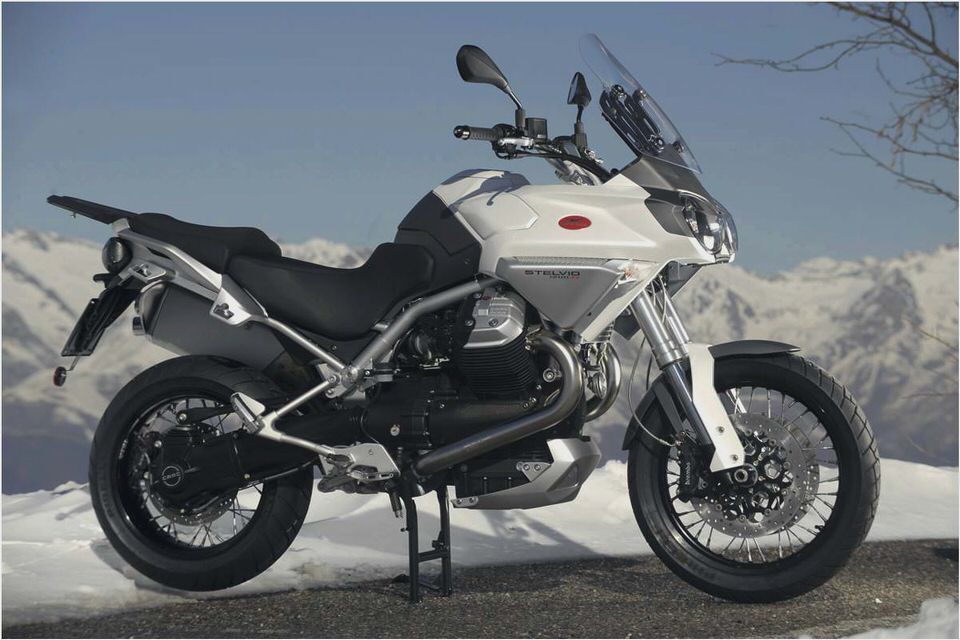
2008 BMW R1200GS vs. 2008 Moto Guzzi Stelvio 1200 4V Meet the Twins.
BMW and Moto Guzzi have been perceived as head-on competitors from the day Guzzi introduced its original 700cc V7 in the 1960s. After all, both power the most important models of their range with transverse-mounted, air-cooled, two-cylinder engines of similar displacement. Now they both offer big adventure-tour bikes: BMW’s R1200GS and Moto Guzzi’s Stelvio.
Which is better on the racetrack? To find out, I did a comparison test at Pirelli’s test facility in Vizzola.
Located in Italy’s Lombardy province, the track is 1.5 miles long, a mix of medium and fast bends and esses, with short straights in between; testing tires in a straight line means just about nothing. The no-holds-barred track test had the intention of probing the performance potential of the two competitors, and it goes well beyond what a sensible rider will experience on the road, since neither of the two bikes was intended to be thrown around corners like this.
The biggest differences in the two bikes are in their suspension and tires. The Guzzi uses a massive and beautiful 50mm inverted Marzocchi fork, while the BMW has that exclusive Telelever alternative front suspension. The Beemer also uses specifically developed Metzeler tires—Tourance EXPs—which are less tarmac-oriented than the Pirelli Syncs of the Stelvio.
The BMW’s rear tire is a much skinnier size—150/70-17—than the Stelvio’s sportbike-spec 180/55-17.
What’s more, the R1200GS is lighter than the Stelvio, with a claimed curb weight of 508 lb. but it sits the rider higher, at 33.5 inches above the ground. That tall seating position, however, is also a little forward of the swingarm pivot, for a more-balanced weight-distribution bias under dynamic conditions. The straighter handlebar creates a slightly leaned-forward riding posture.
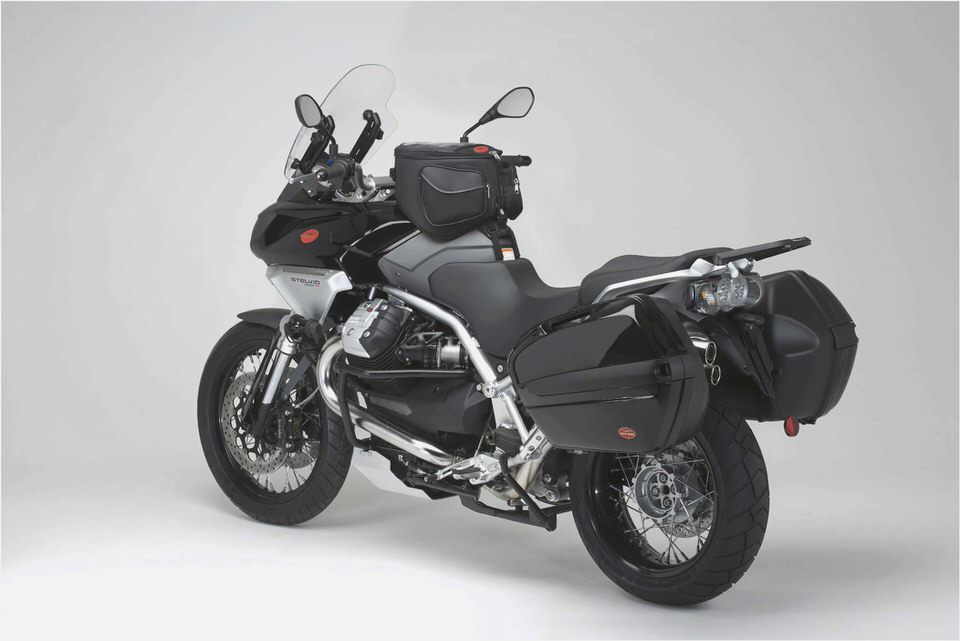
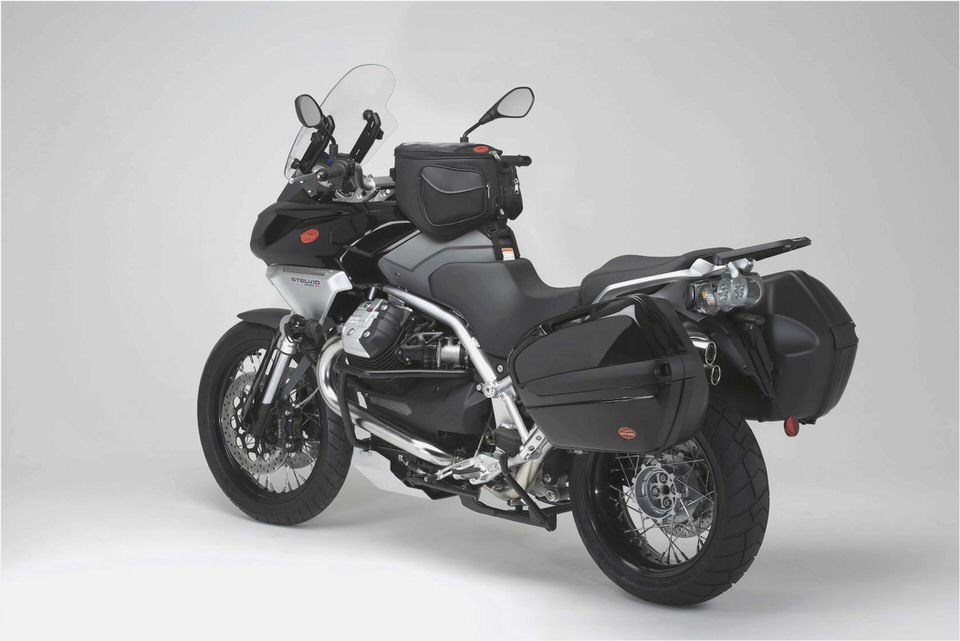
At peg-scraping lean angles, the BMW proved more precise, more neutral—especially around fast bends and esses—and its lesser weight also made it more agile and easier to balance around the hairpins. But with the help of its ESA (the optional electronically adjustable suspension) set at “sport,” the GS felt solid and stable, reassuring even when thrashed around.
BMW claims 105 hp at 7500 rpm—the same as the Guzzi—but with 85 ft.-lb. of peak torque at 5750 rpm. Even though the Stelvio makes 5 ft.-lb. less torque, it still feels stronger, pulling hard way past its 7500 peak power limit. It’s a terrific motor that never seems to give up.
But the Stelvio’s main frame tubes—shrunk to 42mm from the Griso’s burly 54mm—take their toll, especially when combined with an excess of front-end geometry and a less-balanced weight-distribution bias. When pushed, the Stelvio has a hard time keeping a line. And the fatter rear tire plays against the bike’s handling qualities, creating torque-steer that the frame structure cannot fully digest.
The lighter—but geometrically loaded—front end is less responsive to steering and so tends to go wide when accelerating hard, which one has a tendency to do at the track.
At the end of the day, the R1200GS’s best lap time was 1:26 flat while the Stelvio’s best was a 1:28.99. But at the quarter-mile drags, things went the other way, with the Stelvio ripping through the traps in 12.49 seconds at a speed of 105.51 mph. The Beemer, perhaps hampered by a second gear that has been “shortened” from 2.82:1 ratio to 2.91:1, lagged behind with a 12.7-second, 107.5-mph run.
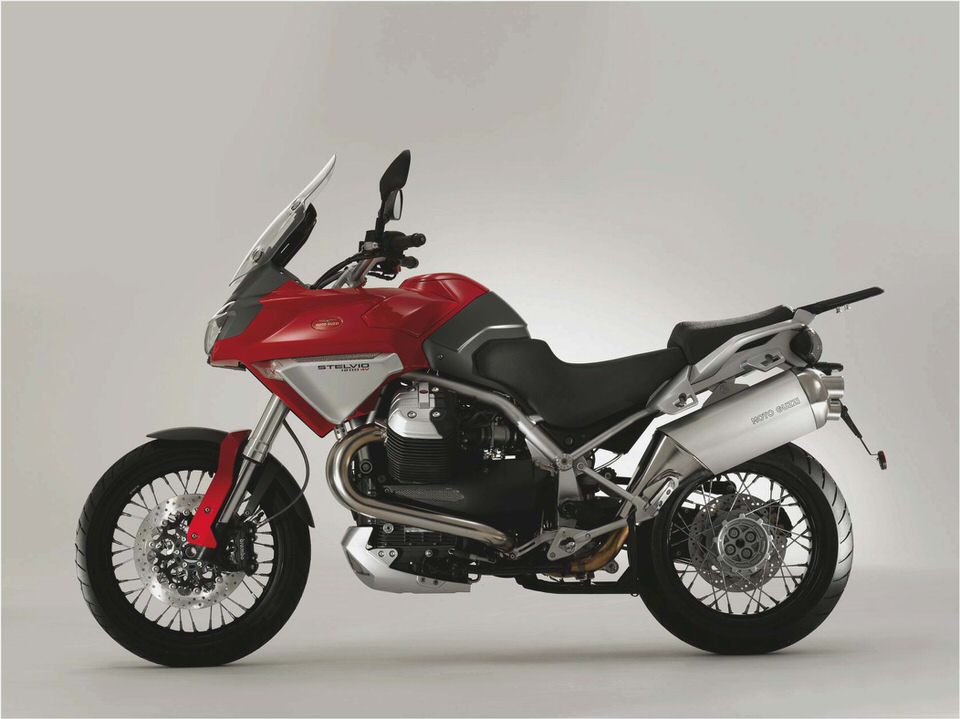
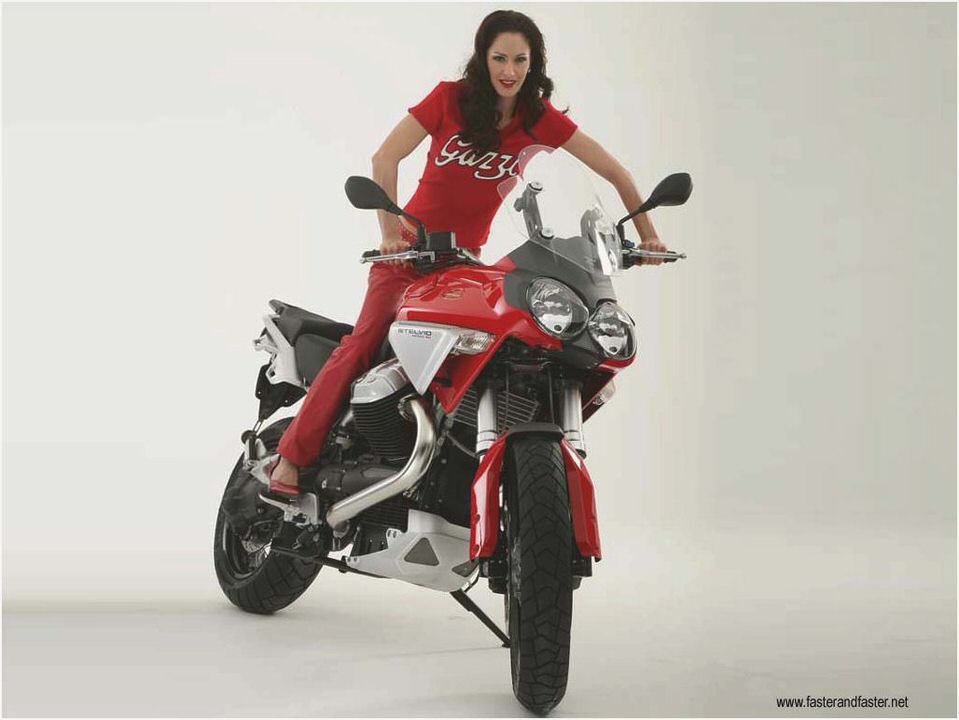
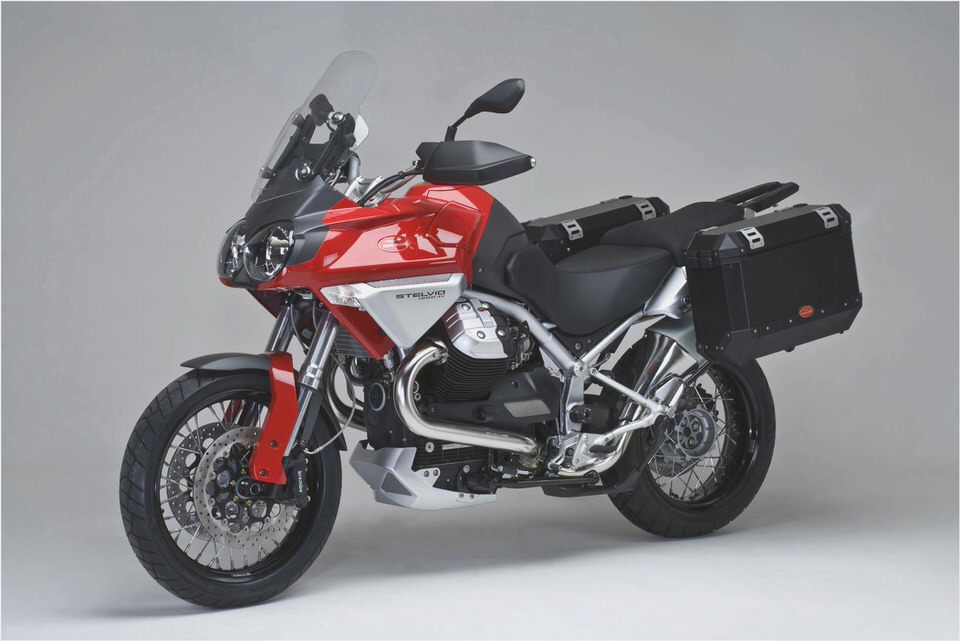
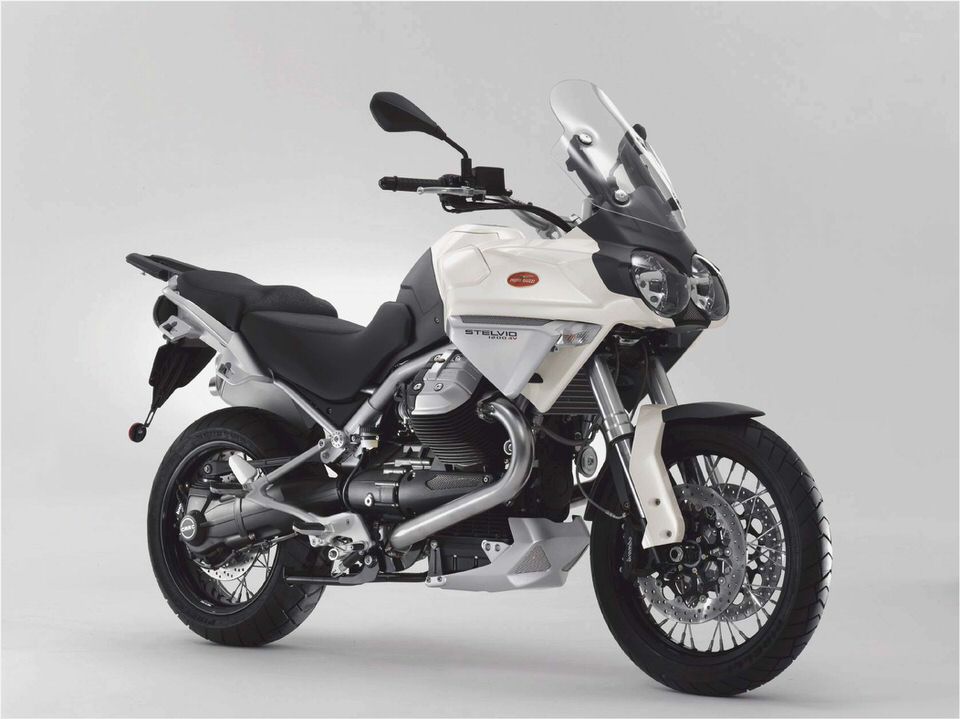

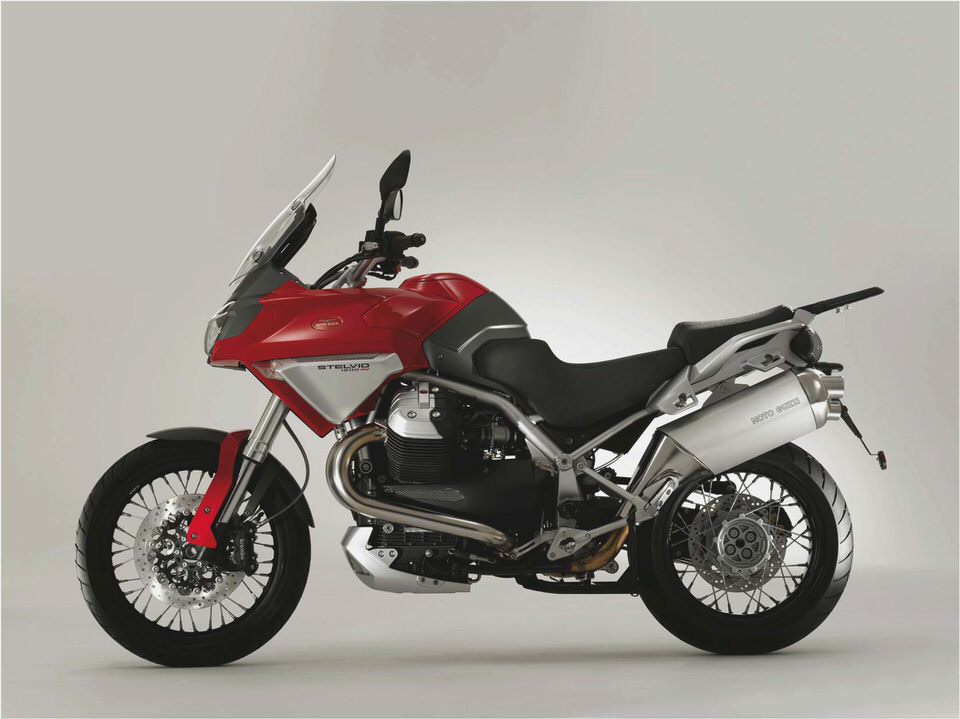
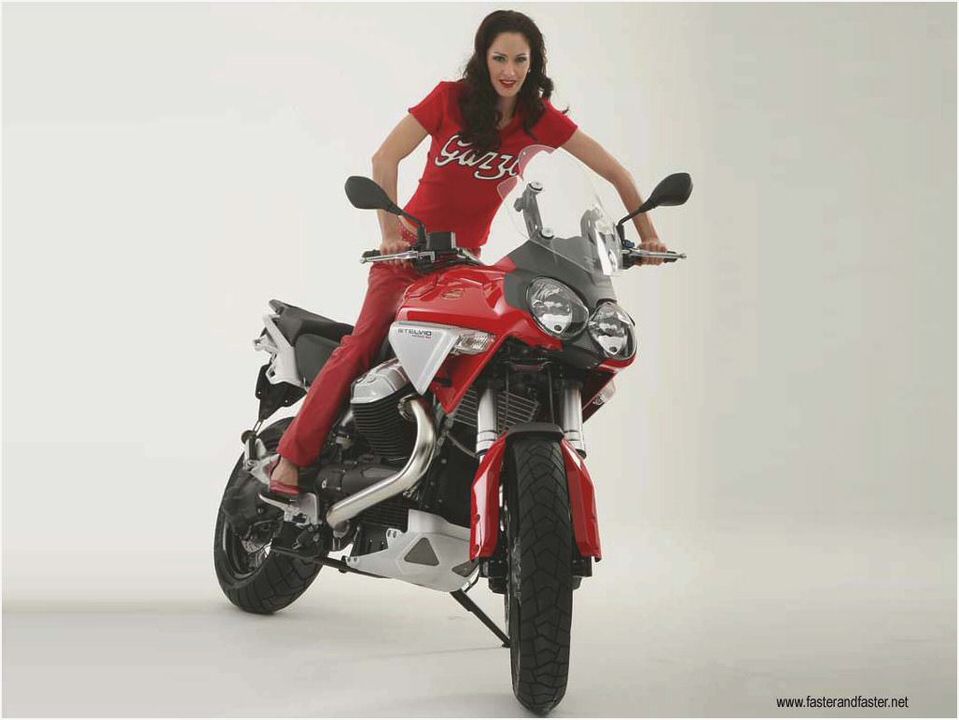

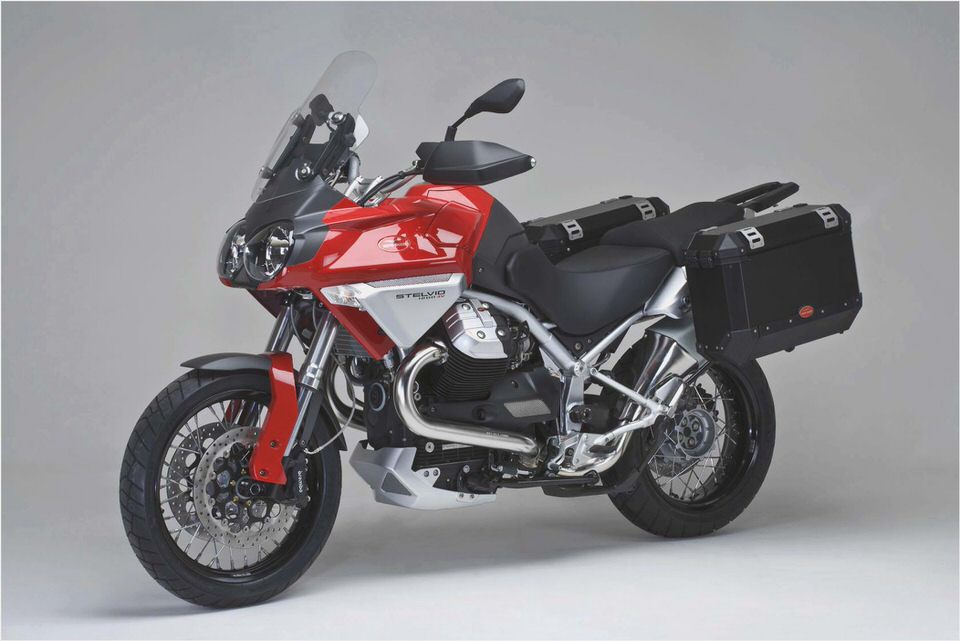
- Bike Profile: Moto Guzzi V7 Racer-News & Reviews-Motorcycle Trader
- Moto Guzzi Club GB
- Moto Guzzi Equips the Stelvio 1200 for Adventure! : The Moto Guzzi Guide
- Motorcycle: PIAGGIO MP3 400 (2009) wallpapers and specifications
- Living With the Moto Guzzi California Vintage
